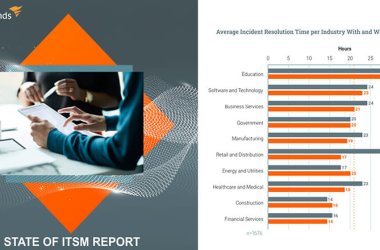Vibhu Kapoor, Regional Vice President – Middle East, Africa & India at Epicor, has penned an exclusive op-ed for December’s edition of CNME, in which he has stressed that ERP automation can succeed when organisations put people first. 
Enterprise resource planning (ERP) systems are nothing new to a tech-savvy business community.
UAE organisations have long leveraged ERP to help manage day-to-day operations in industries from manufacturing to retail.
With the government laying out clear strategies to accelerate economic development, organisations must prime themselves for growth and can do so by optimising their ERP implementations.
The challenge before them today is not adoption, it is augmentation — augmentation through automation. By injecting the right dose of automation, companies can accelerate their journey from survivor to thriver.
They can either automate the extended business from within the ERP system or automate the functions of the ERP system itself. Either way, automation represents a turning point for organisations that stand on the cusp of greatness.
Going silo
Automation’s uses are, mostly, limited only by the imagination. Effective implementation, however, hinges upon understanding how the automation of a business process, or the integration of legacy IT platforms with automation features, connects to value for customers and employees.
ERP has the capacity to reach every part of the business, regardless of its industry or operating model.
From finance and operations to warehousing and customer-relationship management, ERP manages and optimises in countless ways.
Automation is a turbo-boost for this productivity engine. When a business automates both operations and ERP, it takes departments out of their silos and connects them to a unified information ecosystem. All departments contribute to this information and all benefit from it.
Being able to see the supply chain at a glance is a benefit to more than just operations and logistics. Up-to-date inventory data is worth something to those outside sales and purchasing.
Consistent views of the business, fed into an AI module, can lead to increased revenues and higher customer-retention rates, through the provision of actionable insights.
The benefits continue. Automated ERP processes have been shown to reduce labour costs and increase productivity.
McKinsey linked automation to a global rise in productivity growth of 0.8% to 1.4% annually. With more time on their hands, employees can focus more on their personal development and innovating on behalf of the business, leading to yet more growth.
Workers in control
Human-centric automation is critical. If the workforce feels threatened, morale will suffer. And productivity and profitability will follow.
Automation is helpful in optimising data insights to put employees in control of technology rather than having technology remove autonomy from human hands.
Informed, empowered teams should be the goal. People will feel valued and motivated, which is exactly the environment in which innovation happens.
And the environment is made even more attractive by the inclusion of secure cloud storage and services that allow knowledge employees to work from anywhere. The cloud ecosystem also enables businesses to remain connected to customers and partners wherever they may be.
Through the automated ERP platform, organisations are more agile when requests, opportunities, trends, or problems arise.
Done with adequate forethought, ERP automation has the potential to reinvent the business. It delivers consistency across operations and performance.
But as with any great change, automation should be initiated by clear-eyed planners who understand the business top-to-bottom and are aware of the investment required, both in terms of budget and labour.
Managers of the change process must come up with a roadmap that allows iterative change with minimal disruption. Existing infrastructure must adapt, and employees must be trained and supported throughout the journey to ensure the workplace, its talent, and its capabilities all change as one.
Before each step, ensure that you know what the benefits are to the business of each implemented solution.
What problems is the solution designed to fix? What does success look like and what metrics can capture its presence or absence?
What are the roles and responsibilities affected by the change? On top of the obvious requirements-fit questions, what level of service is provided by the ERP vendor or its channel partner?
To what extent do its representatives understand your industry and your unique use cases? Such questions will help the organisation navigate procurement and post-implementation evaluation.
An artificial trade-off
ERP has long been the spine of technology suites across scales and industries. Many digital transformation programs revolve around its automation.
IT leaders across the region see ERP automation as central to the unlocking of the planning platforms’ full potential.
People-centric automation goes much further than the mere digitization of processes. By including employees, it supercharges the work environment and gives something that technology alone cannot — the potential for innovation.
Organisations that appreciate this distinction rid themselves of the artificial trade-off between technology and people. On building relationships, exhibiting empathy, and thinking outside of the box, machines simply cannot compete with human employees.
Enterprises will automate. That is a given. But they may miss out on far greater value if they fail to put people at the hub of digital transformation.
As UAE businesses look to boost internal efficiencies and futureproof operations and revenue streams, a patient, well-designed automation strategy will be critical.





